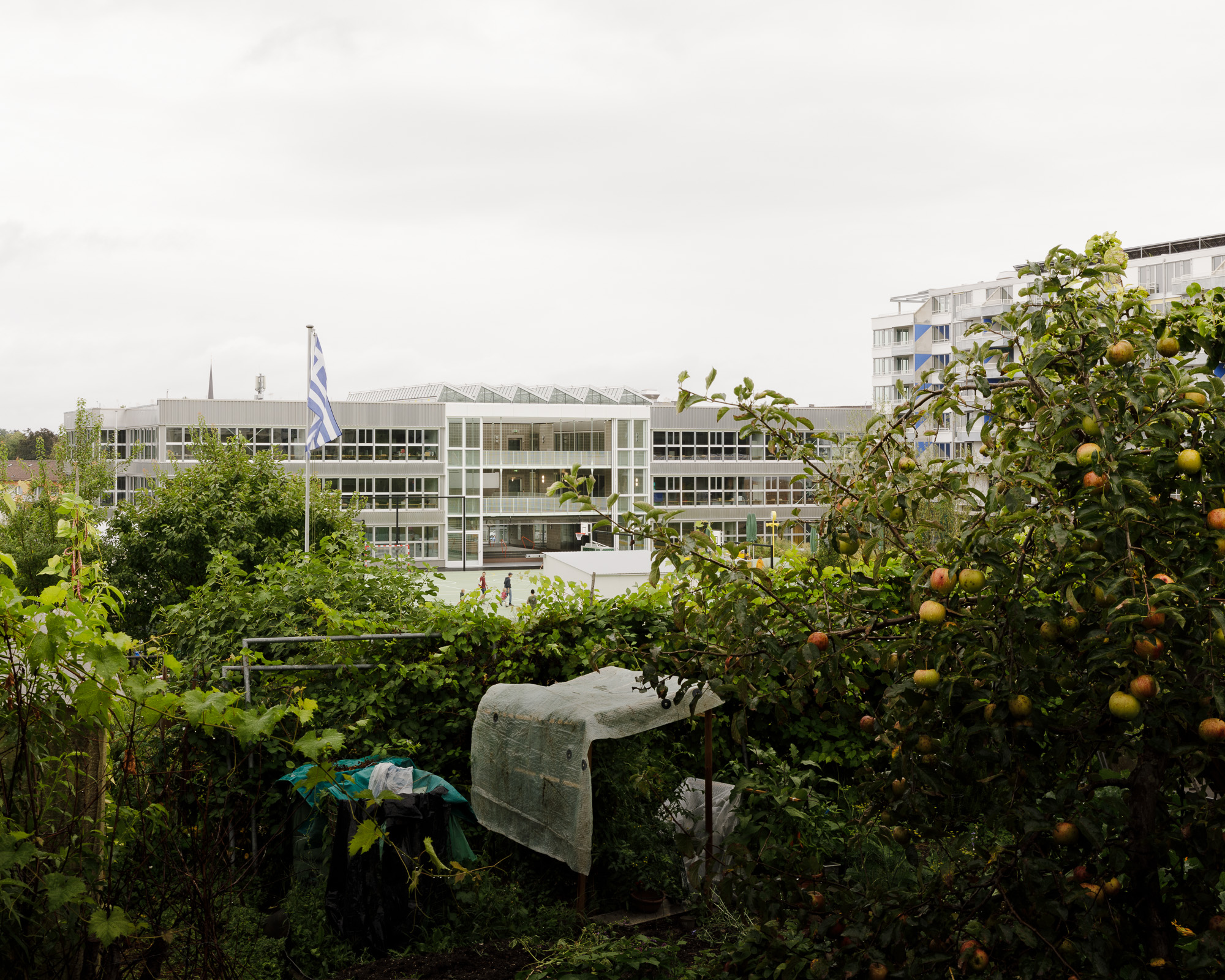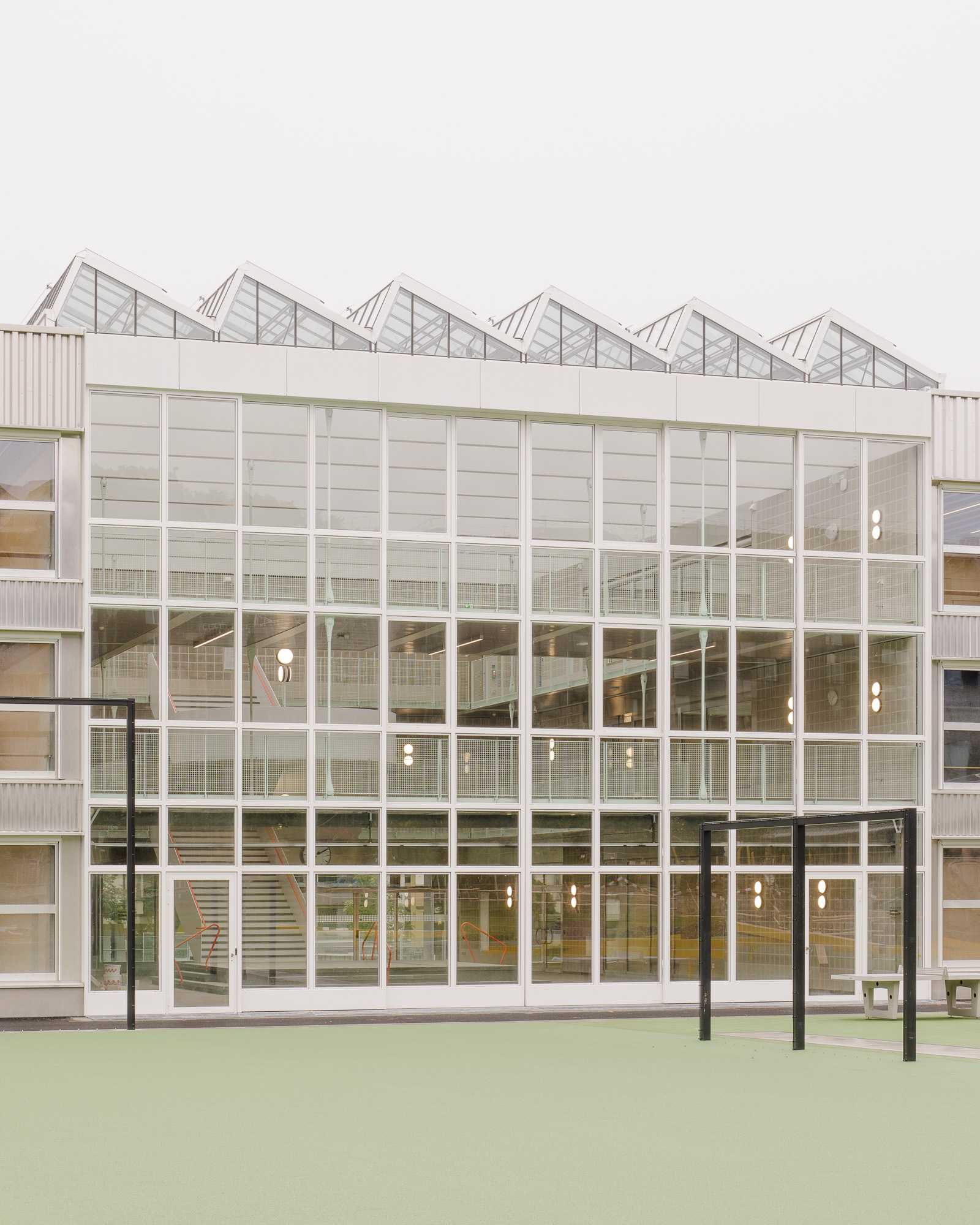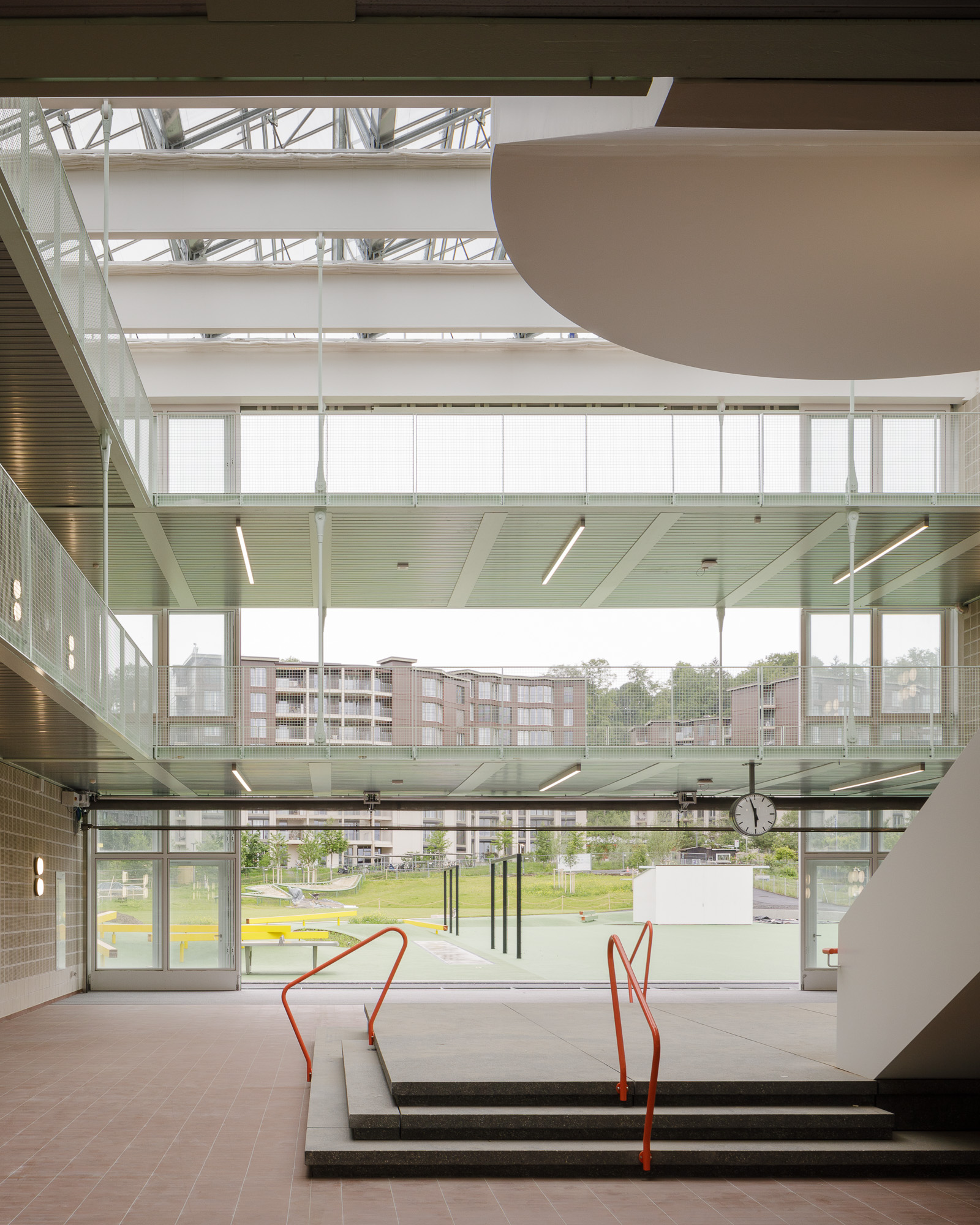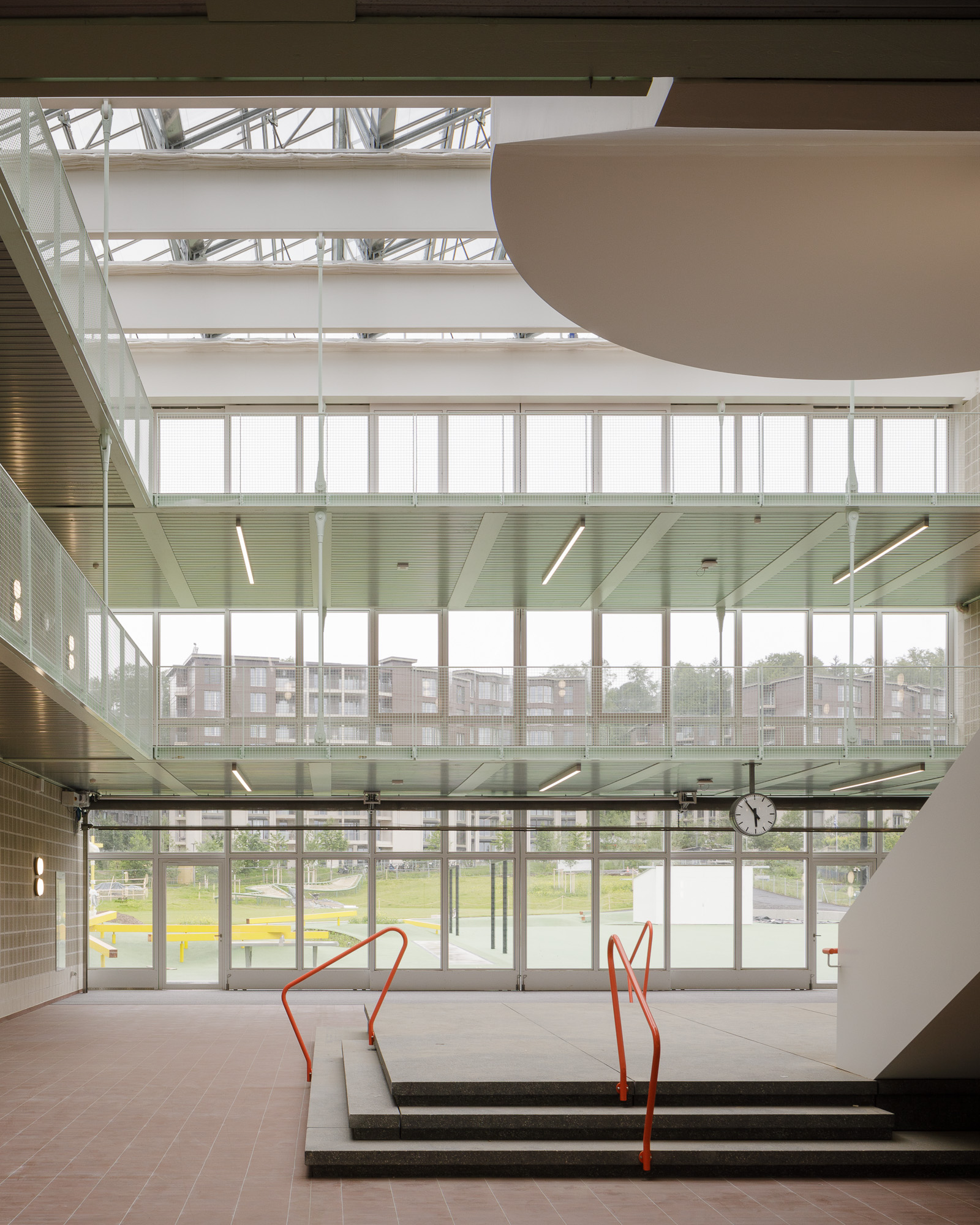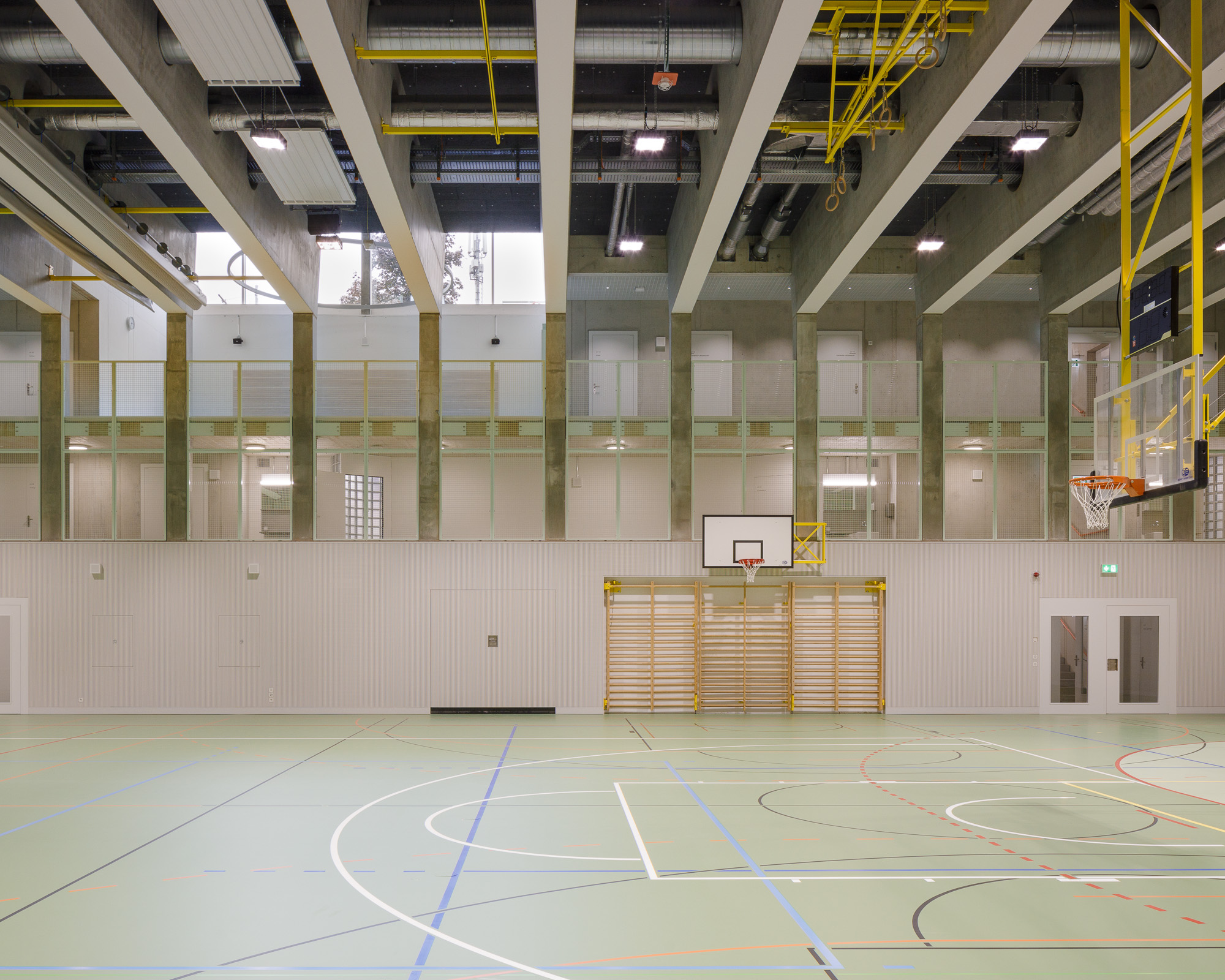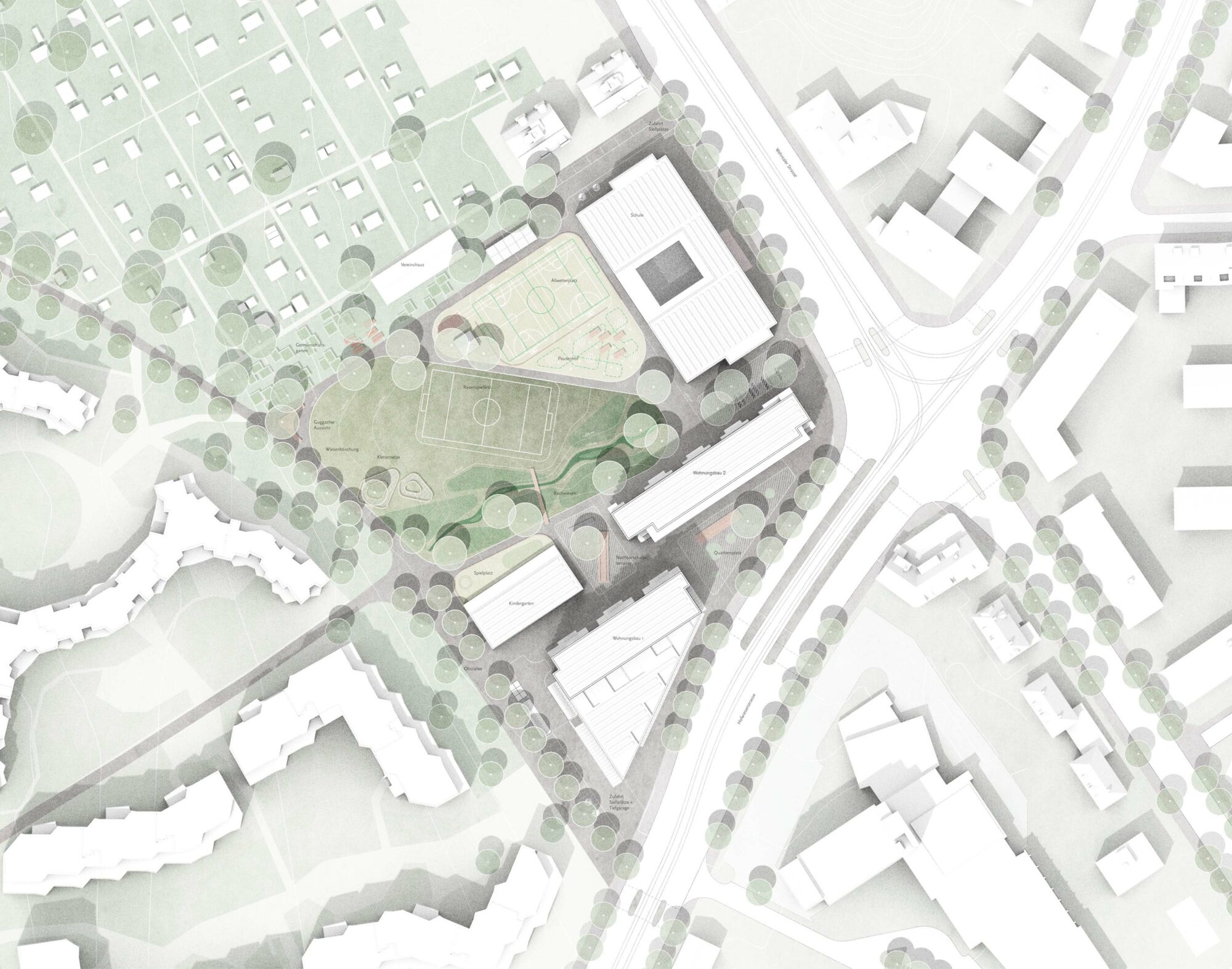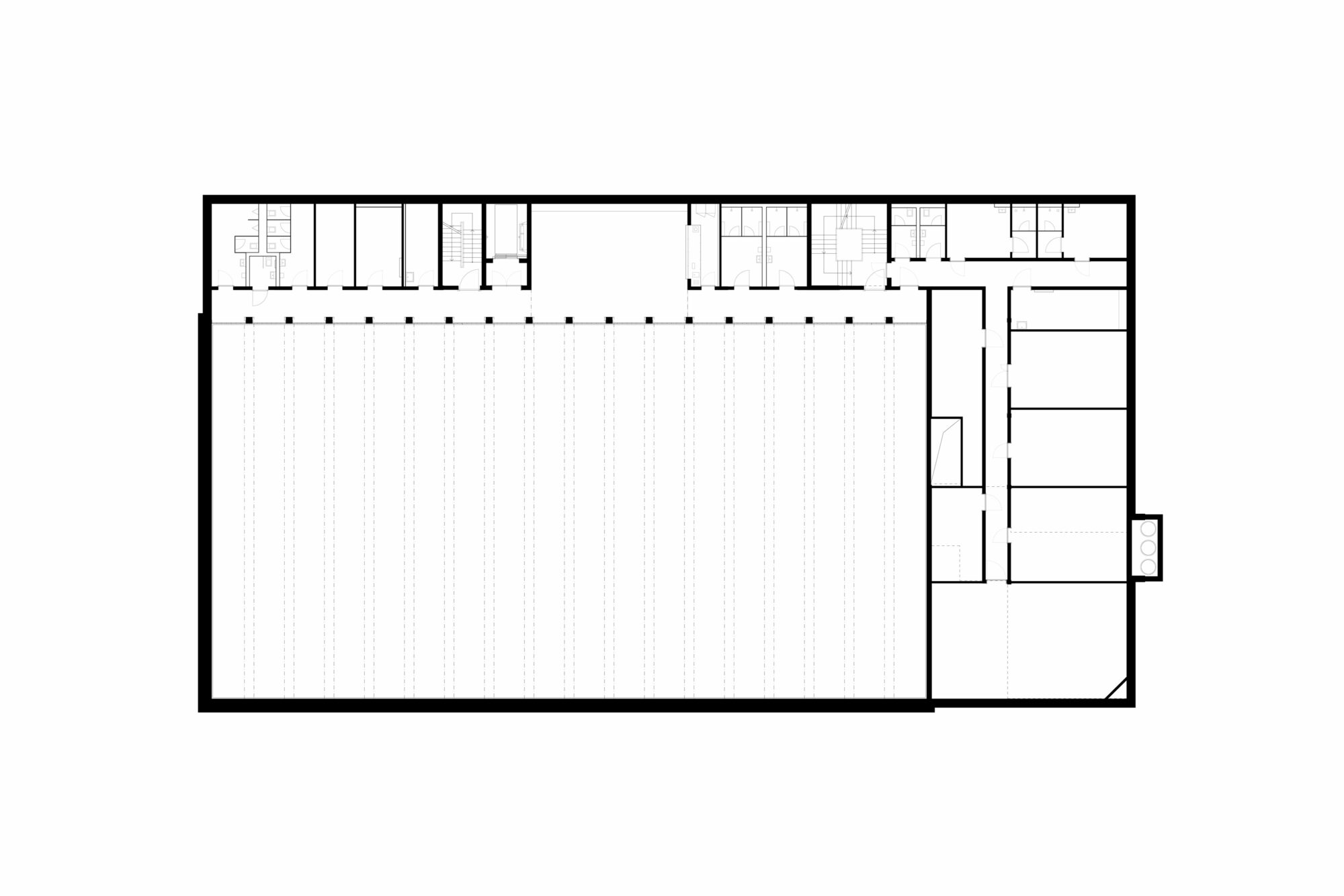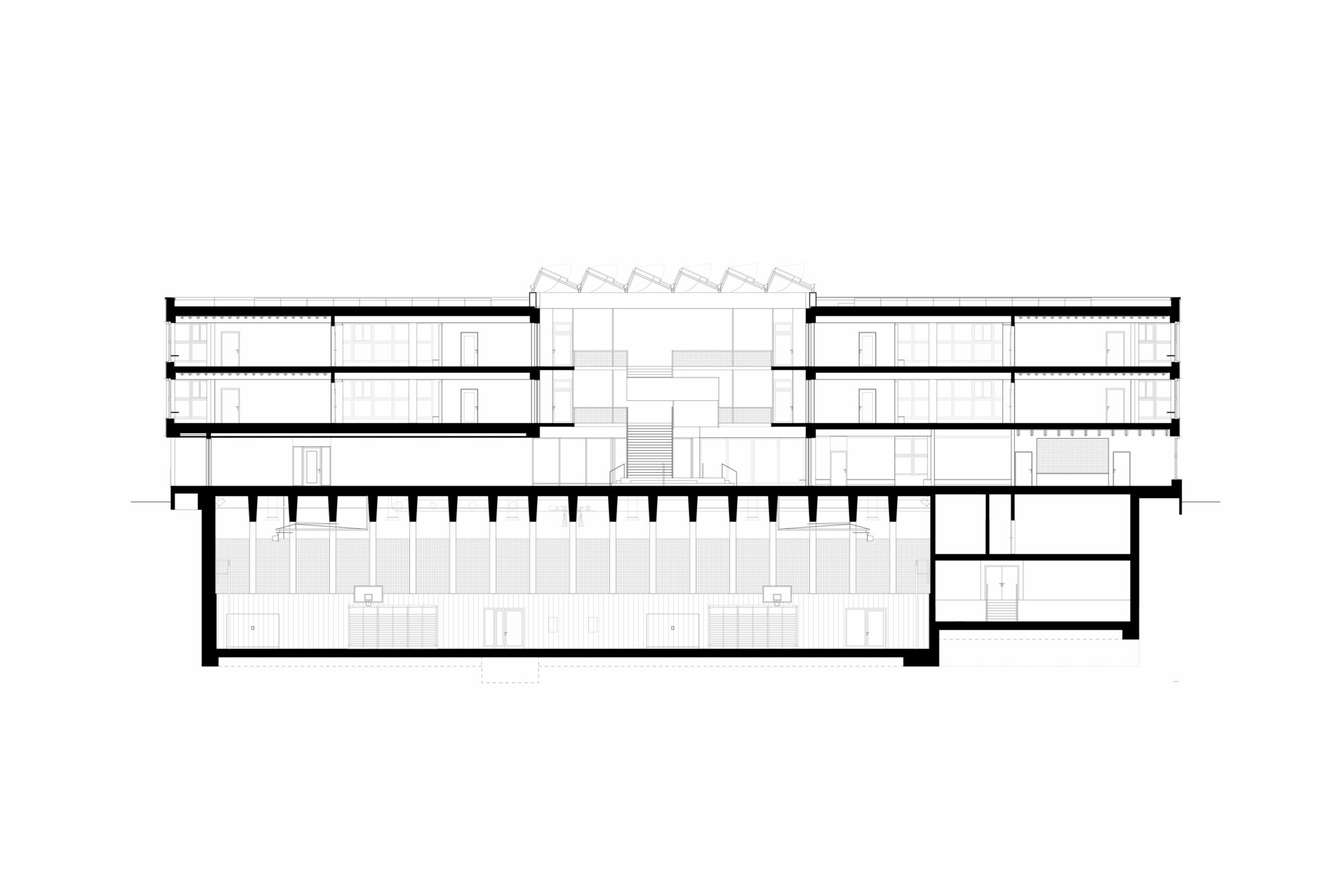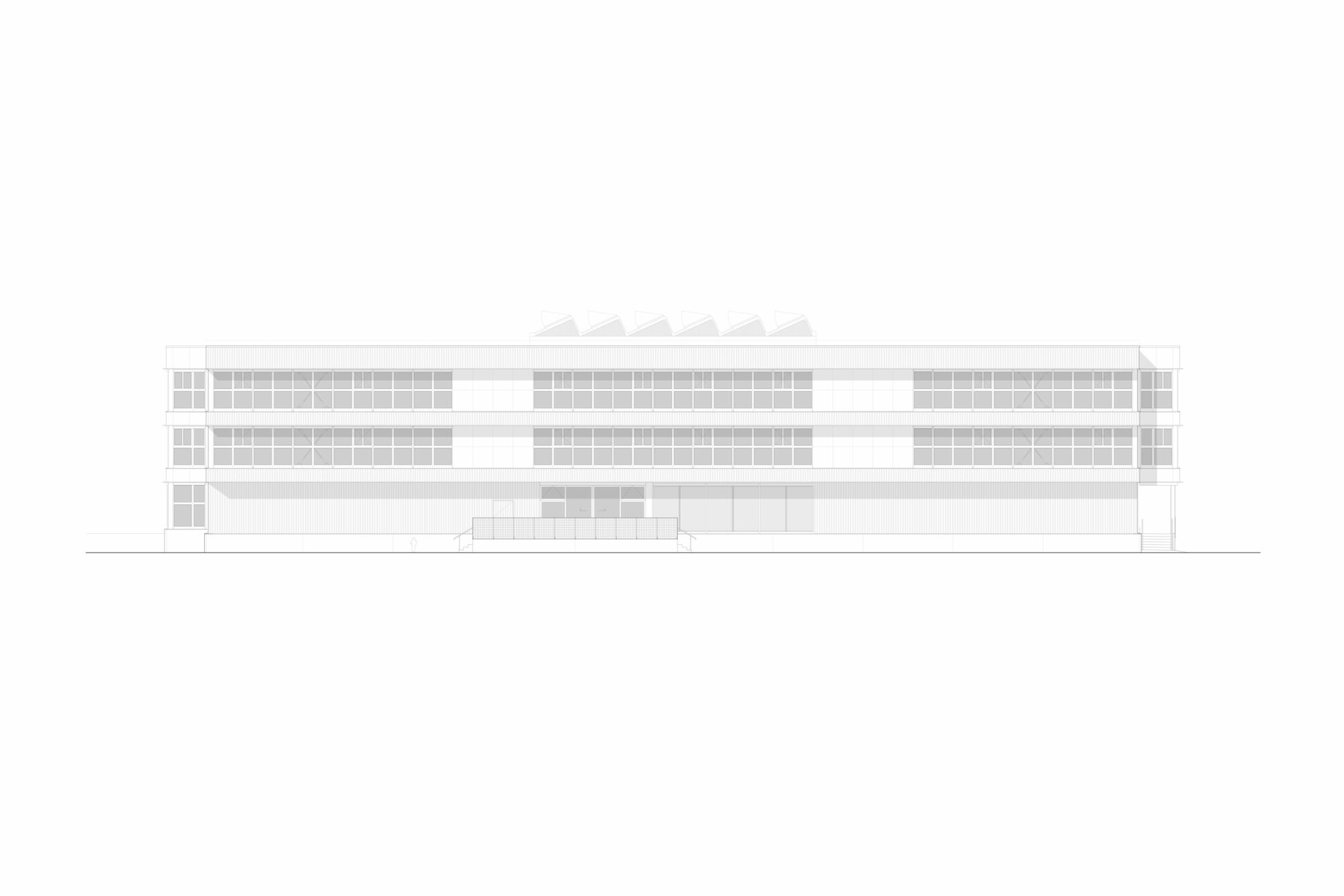Using a standard greenhouse construction, the roof can be opened, while integrated sunshades provide shade as needed. Combined with air vents and the energy from the sun, users can actively influence the indoor climate. The atmosphere and comfort of the space shift in response to the environment, blurring the boundaries between indoors and outdoors. The three-story atrium of the foyer offers spaces for possibilities that can be freely reimagined and adapted over time. Foldable partition walls in group rooms and the auditorium, along with furnishable circulation zones in the school clusters, further enhance the adaptability of the spaces, ensuring functionality while maintaining durability.
The atrium was conceived as a simple, cost-effective structure outside the insulated perimeter. Since it was not part of the original brief, no budget was allocated for this space, necessitating a rational and functional design approach for the rest of the building. To optimize weight, material consumption, and long-term flexibility, the structure follows a skeletal framework. Prefabricated columns, beams, and ceilings are stabilized by wind bracing on the façade. The structural skeleton rests atop three underground floors, including a double sports hall. A double-height spectator area on the first basement level creates a sectional configuration that allows natural light to reach the underground sports hall.
The intentional separation of structure, building services, and interior finishing is evident throughout, shaping both the functionality and aesthetics of the building. In contrast to the rough concrete material, the classrooms and circulation areas feature parquet floors and wooden furniture, creating a warm atmosphere. The use of simple plywood panels aligns with the economy of means approach, as does the exterior façade clad in untreated aluminum trapezoidal sheet metal.
